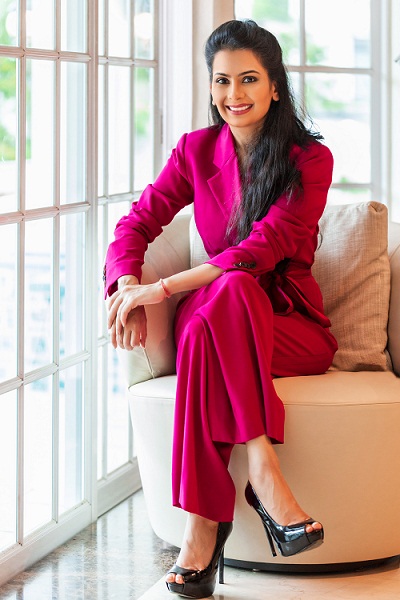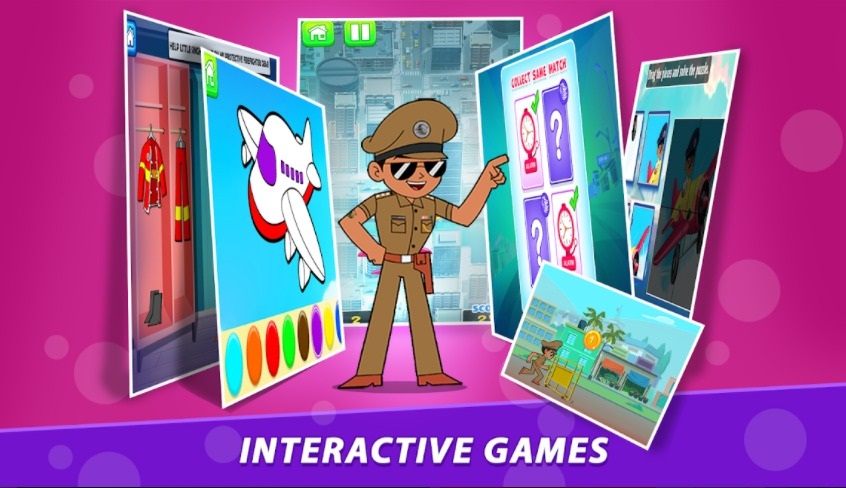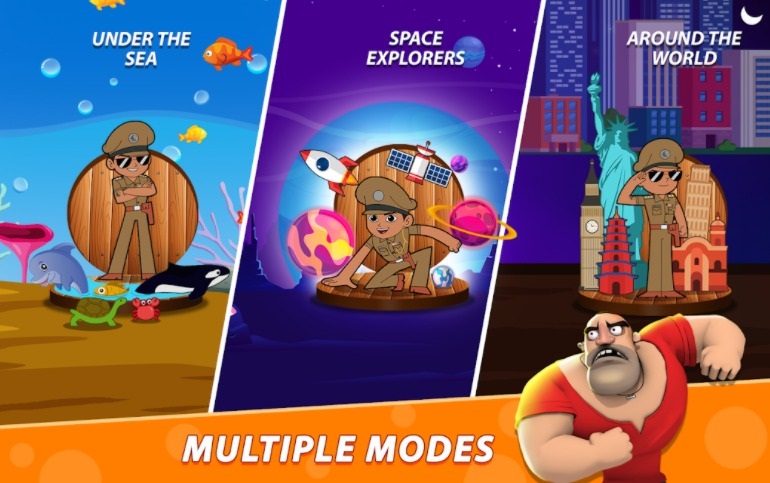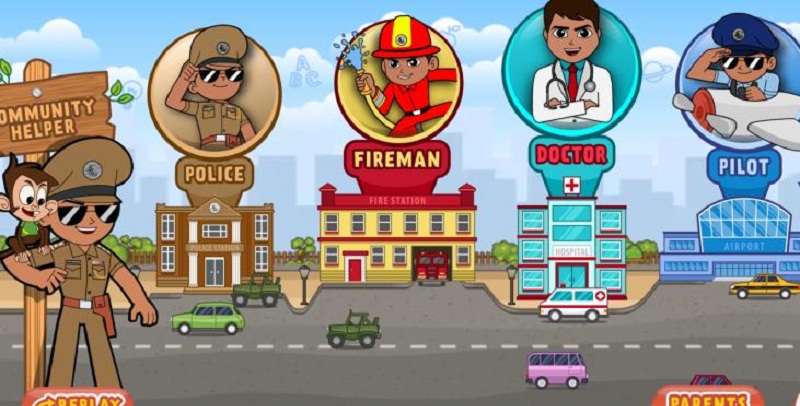Ed-tech in India is a vast market that is growing every day and covid-19 has accelerated its adoption. The pandemic has transformed the old chalk-talk teaching model into one driven by technology.
Taking digital education a step ahead, Prerna Jhunjhunwala, the founder of Creative Galileo and Little Paddington, developed a kids early learning app – Little Singham which crossed two million downloads in just the first six to seven months of its launch. The Creative Galileo platform creates creative curriculums for children of three to eight age groups. Jhunjhunwala strongly believes that education is not a privilege and her vision is to make education a right for every child.
The founding team has Anunay K who is the co-founder, and comes with over 16 years of experience, building games and interactive digital platforms for children. He was associated with The Walt Disney for eight years. Deesha Vora who is a passionate techie is the head of Engineering at Creative Galileo.
Animation Xpress had an interesting conversation with Jhunjhunwala where she revealed her business plans, revenue model, and more.
She launched the app in July and within the next six months, the app garnered more than a million downloads. She commented, “We are the only startup that garnered 2.5 million downloads within the first six to eight months and we have 500,000 active users per month.”
Talking about the idea behind why she ventured into the digital kids learning space, Jhunjhunwala said, “After my first successful venture Little Paddington, a chain of preschools in Singapore, I wanted to do something so that I can reach a lot more people. I started researching and what I found is that education in India is almost a chore. It is like ‘Beta padho padho padho’ (kids please read), which the rest of the world is not doing anymore. The world is moving towards play-based learning. So basically what I have successfully done offline, I wanted to do it online.”
She further added, “When researching about India’s ed-tech space, I came to know everybody seems to be focusing on Byju’s, Vedantu, Unacademy for test preparations. That’s when I realized that there is a big need gap and education is still a challenge in the remotest areas. As a mother as well as an educator, I wanted to create a personalized learning experience for every child. So from there, my journey started. I wanted to focus on the three to eight age group and make learning fun.”
On asking why they have selected Little Singham IP for their application, Jhunjhunwala explained, “Children are easily attracted to these characters; Little Singham is the super cop of this generation which stands for his honesty, bravery, and his great ethics. The idea is to use these characters in an effective way, where the child can get personalized and immersive learning with these characters.”
Creative Galileo will soon be adding some more interesting IPs to its platform. Jhunjhunwala revealed, “We have characters like Little Krishna, Golmaal Junior, Shaktimaan. We have also signed with Graphic India studios for Chakra and we are also looking forward to many other big animation companies to partner with us soon.”
While highlighting the USP of the Creative Galileo platform, Jhunjhunwala added, “Our unique feature will also be that all the characters (be it Singham, Chakra, or Krishna) will be interacting together in one space, something that hasn’t been seen before. Ours is a unique platform where kids can play with all the characters and it is a controlled and child interactive platform. There is neither popping of advertisements nor any irrelevant content being blasted on kids. We have segmented our content relevant to the age groups and are into every domain: Science, Mathematics, English, Arts, Music and so on.”
Explaining how the platform works to deliver quality and engaging content to educate and entertain, Jhunjhunwala said, “We don’t think we have to create engaging content because there are various animation companies who already have a huge amount of good content with them. YouTube is blasted with animation content from different creators. Our idea is to create a platform with gamers who can use our IPs to redesign and gamify the content to make it more relevant for the children.”
Talking about the challenges they faced, Jhunjhunwala added, “The biggest challenge faced by me while launching the app was my fear about how do we manage to reach people as there are so many apps already present there. I wanted to make my product reach Tier II and Tier III cities, and we wanted to penetrate across real India. I thought we have to spend a large sum on marketing but surprisingly we have spent no money on marketing, the cost of acquiring a user is less than 20 cents. When we launched this app, we saw a lot of acceptance across India, almost 65 per cent of users were coming from Tier II and III cities.”
On asking about the revenue model of the platform, Jhunjhunwala said, “We will be moving towards subscriptions. There will be standard and Premium subscriptions. We have tiered our model based on a different range of subscriptions. As we know the pain and capacity of Tier II and III cities, our charges will be very low for them when compared to Tier I cities, and the charges will be much higher for international countries. Almost 90 per cent of downloads are coming from India and another 10 per cent is coming from international countries.”
Revealing about her plans for Creative Galileo, she commented, “We are looking forward to adding more age groups, from three to 12 years. We feel that this age segment will be more interesting and creative and our characters have a lot of visibility in this age group. The app is built in a way that it can be modified for regional languages as well. Only after the launch, I realized that my market is not only India but we can travel across the world and now we have started to decouple our platforms so that we are able to bring international characters too.”
Listing the advantages of Gamification of learning, Jhunjhunwala shared “Gamification of learning is the way to go. Now worksheet-based learning is going out of reach as children require hands-on experience. So gamification becomes important in the ed-tech space where kids learn quickly through games. It also makes the learning process more immersive and engaging for kids to remember subjects to a greater extent. Gamification teaches many new skills to kids at an early age and enables the teacher and parent to track the child’s real-time progress.”
She further added, “Some kids learn through visuals, some may learn through auditory, some may learn through kinesthetic. Ed-tech is a multi-disciplinary platform where the child gets immersive learning through audio, visuals, augmented reality and so on.”
Speaking on the adoption of e-learning among schools due to lockdowns, she added, “Because of COVID, the country is digitized, the learning system is digitized. This is the opportunity of digitization. We have to use it effectively to let the children be ‘good consumers of technology rather than mindless users.’ Even after reopening of schools, I don’t think they will completely switch to the traditional method of teaching, there will be a hybrid model of teaching (online and offline) which will bring a pedagogical revolution and curriculum revolution in India.”
On asking whether India is equipped for digital e-learning, Jhunjhunwala said, “India is second largest Ed-tech country in the world after the USA; it could not have been if there was lack of resources. Children have access to technology with which they are adapting themselves to e-learning.”
“I also think with a population of 1.3 billion, we need to expand our resources and have to adapt and update ourselves to newer technologies. The schools and government need to be equipped to bring technological revolution in the education system,” concluded Jhunjhunwala.






